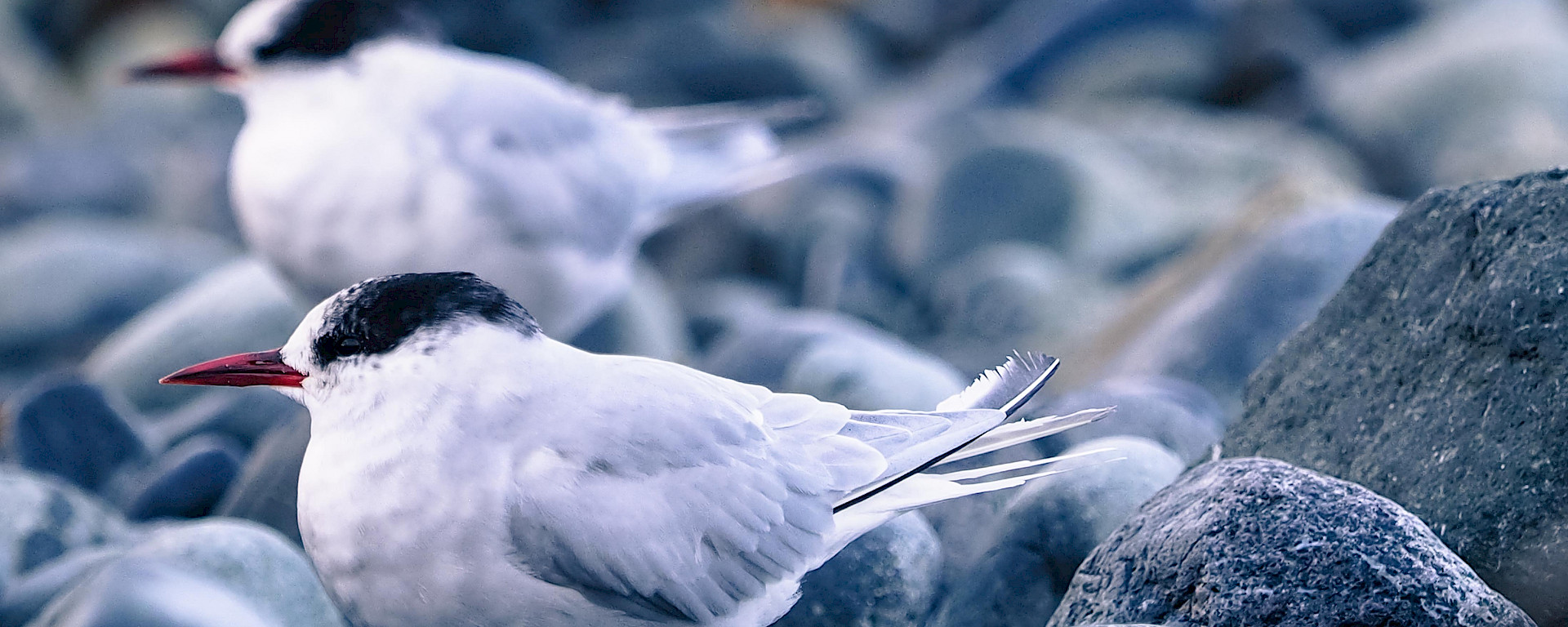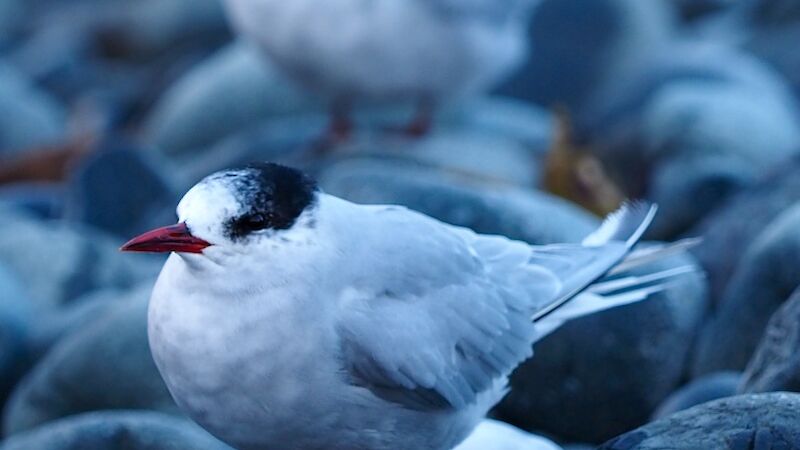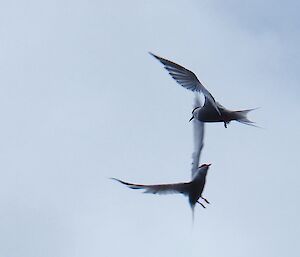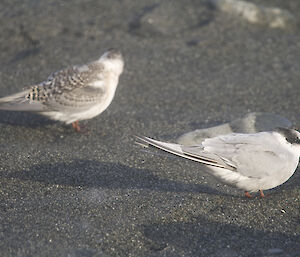Scientific name: Sterna vittata
Physical description
Antarctic tern adults are approximately 40 cm in length and have a wingspan of 80 cm. The bill is bright red and the feet and legs, orange/red. The head is black during the summer, but in the winter months it is streaked with white.
Distribution and abundance
Antarctic terns breed at Tristan da Cunha, Gough Island, Iles Kerguelen, St. Paul and Amsterdam Island, South Georgia, South Sandwich Islands, South Orkney Islands, South Shetland Islands, the Antarctic Peninsula, some New Zealand subantarctic islands, Macquarie Island and Heard Island.
Antarctic terns return to colonies in September and October. They are loosely colonial birds, rarely nesting with more than 40 widely-spread nests in any one locality.
Conservation status: least concern
Breeding
Up to three eggs are laid in a shallow scrape on the ground lined with pebbles or shells. Eggs are laid between October and January. The nests are difficult to see as the eggs and chicks are highly camouflaged.
Fledging of the chicks occurs between January and May. The parents attend their young for several weeks after fledging, occasionally feeding their chicks.
Diet and feeding
Antarctic terns are gregarious, fishing in flocks of up to several hundred birds just beyond the surf zone. They feed on small fish and various crustacea. Antarctic terns also scavenge in the intertidal zone for stranded littoral organisms.
Adult Antarctic terns co-operate to defend their colonies. Skuas and kelp gull still sometimes manage to take eggs and chicks from unattended nests.





